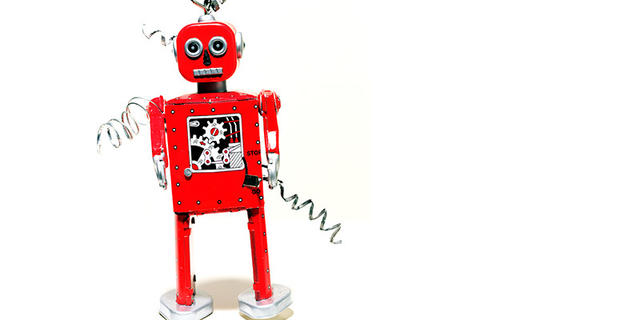Everything you might read about RPA might imply that once you’ve built your bot, you can simply sit back and reap the rewards of the “clear” ROI from the automations you’ve created whilst finding other work for your now-optimized human workforce.
But that’s not always the case.
You may actually be suffering from broken-bot syndrome (yes, it’s a thing). Or maybe that promised ROI never actually materialized (if you dig deep into the real cost of a process lying beneath your vats of legacy debt.)
Regardless of how you measure the success or failure of your RPA program, you’ve likely automated existing legacy processes on top of existing legacy systems.
That means your costs of building the bots, supporting the bots when they break, or upgrading them when underlying systems change is in addition to all the existing costs of “keeping the lights on.” Your legacy systems haven’t gone away. You haven’t truly digitized any processes, and your IT teams could be wondering if you’ve actually made their jobs harder.
But let's be clear.
RPA can and does create great value when implemented correctly, on the right use cases, and in the right mix of attended and unattended RPA under the control of Pega Robot Manager and aligned, where appropriate, with our powerful orchestration, low-code, and case management engine.
All of this is to say that the ultimate goal of digital transformation is not just to automate 10- or 20-year-old as-is processes, but rather to rethink the processes as they should be today, using the vast array of newer technologies at our fingertips.
Your new digitally-native competitors don’t go out of their way to buy legacy systems like yours and wrap them in RPA. They are digital from the top down. When they do business with their customers (and are perhaps also out to steal yours), they are often significantly more efficient. They can enjoy the riches of not having this “legacy strangulation,” and mounting legacy debt you can’t seem to get away from.
I like to help our customers think about their competition differently.
I want to know who you envy. Who seems to be doing business with their customers the way (and at the cost) you wish you could with yours? Envy is not only a great motivator, it is also a great indicator. A great indicator that there is another way to become digital. It’s not an overnight change of course. But if you use this thinking to inspire envy in your competitors then your path to digital is assured.
So, when should you retire your RPA bots?
We have some customers that don’t build any RPA bots without first having an end-of-life plan for each of them. This is a great strategy that I encourage. However, it may be that wasn’t appropriate at the time when you were starting out with your RPA plans.
So you need to look at the processes you’ve automated with RPA and break them down into discrete parts (stages and steps, maybe). Can you find common stages (information gathering, placing an order, validating stock levels, reading and updating spreadsheets, reading emails etc.), that you’ve automated with RPA? What is your human workforce doing? Can you isolate what these RPA projects and humans do? When you do this, you will find a lot of cross overlap either at task levels, stages in a process, or even entire processes. Finding the overlap is the key.
Let's say you’re using RPA to automate Outlook for some projects. Why not remove the need for Outlook altogether on human and robotic desktops for all of your manual processes, not those that just seemed ripe for RPA at the time? Switch to using Pega email low-code bots to not only read those emails at the point of entry, but also apply our natural language processing (NLP) and IDP to accurately extract data, sentiment and context, all stored in the right place, instantly.
This new digital process eliminated an application, uncluttered the desktop, provided full orchestration of this and other work, and provided business configurable SLA’s, routing and metrics. It can be quickly deployed to work elsewhere for you, at great scale like with chat bots, on-line self-service, and even IOT. Could you have done all of this with RPA alone? Sure, but it probably wouldn’t scale, and each project with would be disconnected. This “reusable” digital automation is permanent and can be used across the entire organization for broader IA reach.
Likewise, when you break your RPA tasks and processes down, you will find many ripe for IT prioritization for building digital API’s in the low-code model. Build a one-time collector for driver’s license information, and now every part of your organization can securely consume it. Update your ERP system with RPA, sure, but then have your team search for a likely existing API or have one created. The API won’t stop working like the risk of the UI in your ERP application and also, it’s more secure and scalable.
With Pega, we help our clients look at a process or task in our design workshops, and whether it’s RPA, API’s, live data, email bots, structured or unstructured data, the rules engine, Process AI, security, governance, scale, cloud, on-premises, etc., you should make the right choice for the right time and priority. But then, with Pega, all of these open up your ideals, across the entire platform, and will help steer the “retirement from RPA” path to digital. All built, managed and progressed, through one powerful low-code model.
Recommended resources:
- Register for our next Robotics Community event
- Learn more about Pega RPA
Don't forget
-
JOIN THE CONVERSATION on Collaboration Center
-
FOLLOW @PegaDeveloper on Twitter
-
SUBSCRIBE to the Pega Developer Podcast on Spotify or via RSS

